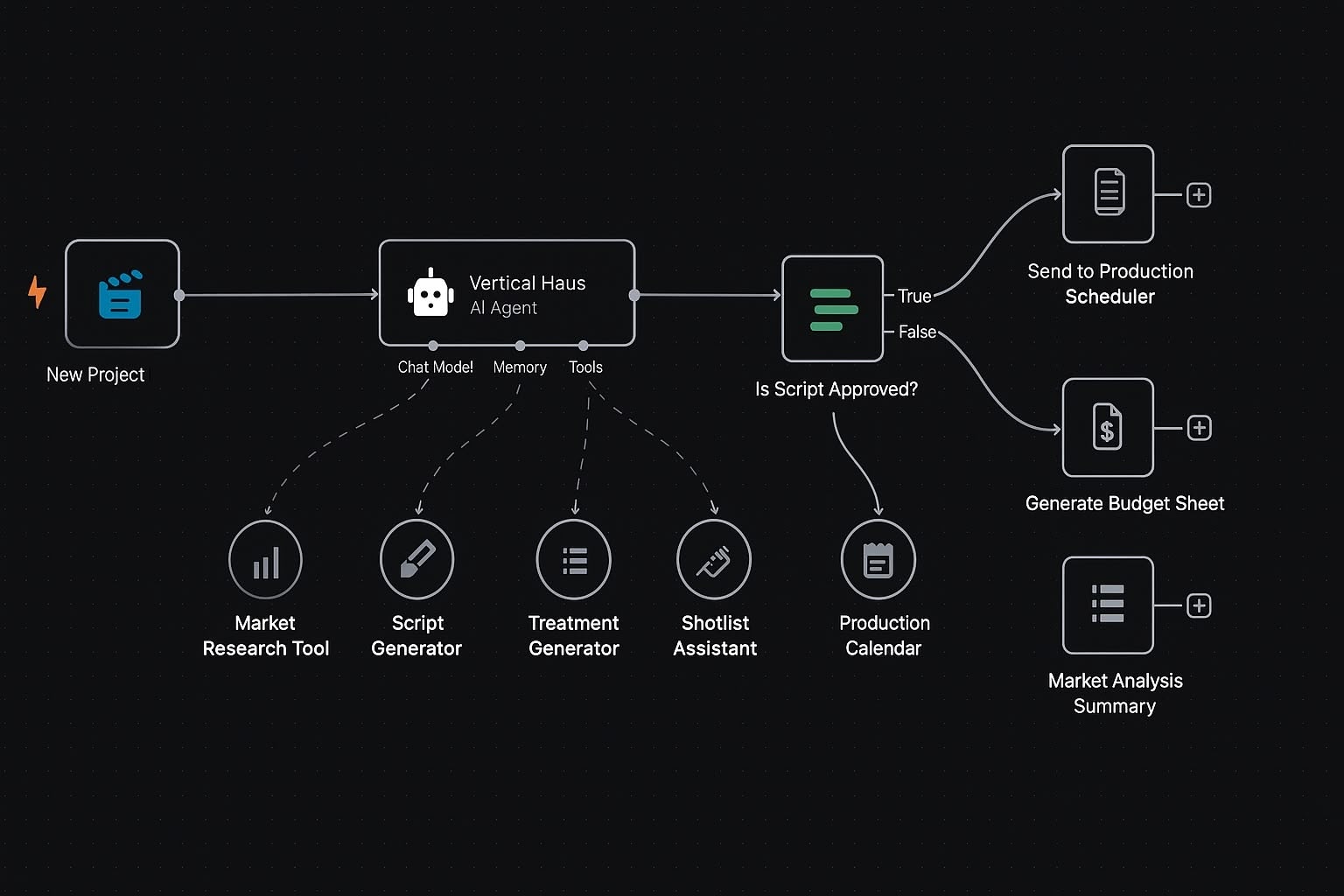What an AI agent is — and isn’t
An AI agent is a focused toolchain that combines a language model with your references, style rules and production steps. It does tasks your team repeats: gathering references, summarising research, turning notes into a treatment, blocking out a schedule or pre‑cutting a script. It doesn’t replace your director or creative lead. It removes drag so your people spend more time on taste, performance and story.
Where pre‑production loses time
- Research sprawl: too many tabs, no synthesis.
- Messy briefs: unclear constraints lead to rewrites.
- Slow treatments: formatting and image wrangling kill momentum.
- Shot planning: fragmented notes make scheduling hard.
A practical agent workflow
- Ingest the brief: the agent extracts objectives, must‑haves, guardrails and tone.
- Scan and summarise: trend and audience scrape distilled into a one‑pager with links.
- Treatment draft V1: headline, concept paragraph, three visual beats, runtime, end card.
- Look‑dev: mood frames or style tests using your preferred tools. References embedded.
- Script block‑out: dialogue or VO beats, plus on‑screen text suggestions.
- Shot list and schedule: scene IDs, locations, props, quick timing estimate.
The output should be a tidy folder you can send to a client or producer: PDF treatment, script, references, a short concept reel if needed. If nothing else, the agent ensures every brief reaches a presentable V1 the same day.
Speed without losing taste
Speed matters only if quality holds. We keep taste by locking style rules into the agent: language dos and don’ts, typography choices for slates, colour references, framing notes. The agent can propose variants, but it should never outrun your taste. Creative leads approve and reshape before anything leaves the room.
Where this lands for brands and studios
- Pitch faster: three routes in a day instead of one in a week.
- Pre‑viz risky ideas: run quick visual tests so clients see it, not just read it.
- Versioning at scale: social cut‑downs and language swaps without a new shoot.
- Smaller crews, tighter days: clear shot lists and schedules reduce overrun risk.
A simple ROI model
Time saved in pre‑production drops straight to margin. If a standard treatment cycle takes two to three days, an agent gets you to a strong V1 in hours. Multiply that by the number of routes you pitch each month. Add the value of ideas you can now test that would have died on the page. The numbers stack up fast.
How we deploy at Vertical Haus
We build agents around your workflow. For some teams that means research and scripting only. Others want look‑dev, animatics and auto‑cut reels. We integrate with the tools you already use, and we keep a human in the loop at each stage so the work stays on brand.
- Send us a one‑paragraph brief and a brand link.
- We’ll return a V1 treatment, script beats and a look‑dev board the same day.
- Optional: a 20‑second concept reel if you want to see it moving.
